Suzanna van de Lagemaat is a PhD candidate at Utrecht University, working with Douwe van Hinsbergen on plate tectonic reconstructions of the (paleo-)Pacific realm in the Mesozoic and Cenozoic. Her main interest is the evolution and destruction of the Phoenix plate, which is completely lost to subduction.
For the first fieldwork of my PhD I was lucky enough to go to Sabah, the northern state of Malaysian Borneo. Here, in the Baliojong River, close to a village named Tandek, is a fantastic sequence of a paleo-Pacific Plate derived Oceanic Plate Stratigraphy (OPS) exposed.
An OPS, as described by Isozaki et al. (1990), is an off-scraped piece of down-going plate, consisting of pillow basalts, radiolarian chert and flysch deposits, which escaped subduction and was preserved in the accretionary wedge of the overriding plate. Such an OPS holds information about an oceanic plate from its birth at a mid-ocean ridge, to its destruction at a subduction zone, and therefore is key in the reconstruction of plates that are completely lost to subduction. We will use a multi-disciplinary approach, using paleomagnetism, biostratigraphy, geochemistry and sediment provenance to understand the tectonic history of this piece of oceanic crust. The team consists of local radiolarian specialist Junaidi Asis from Universiti Malaysia Sabah, and zircon provenance and geochronology expert Licheng Cao from China University of Geosciences, Wuhan. Douwe van Hinsbergen, my supervisor, and Eldert Advokaat, my colleague and specialist on SE Asian tectonics, also joined the trip.
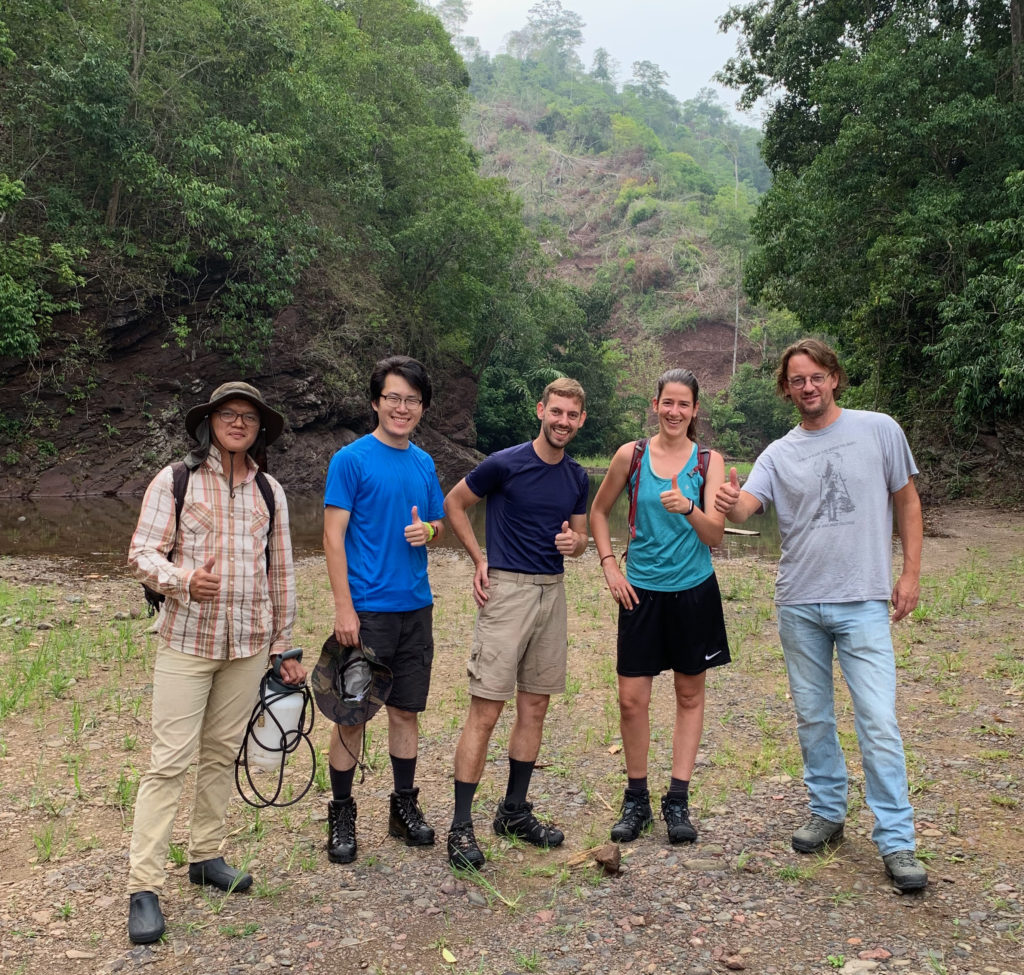
The paleo-latitude of the pillow basalts provide a constraint on the location of the mid-ocean ridge (given the pillows are MORB, which we will check). The age of the oldest and youngest radiolarian cherts provides constraints on the age-evolution of the oceanic crust: The oldest cherts give constraints on the minimum age of the crust at time of formation, while the youngest cherts provide a maximum age of the crust at time of subduction. Radiometric dating of zircons within the overlying flysch will give an additional constraint on the age of subduction of this piece of oceanic plate. Sediment provenance studies of the flysch deposits, which is derived from overriding plate, will provide constraints on the location of the subduction margin.
This sequence is in fact so beautifully exposed that the locals are working on the development of a geo-park. At this moment, however, there are hardly any tracks, and in order to get to the best exposures, it was not always possible to keep our feet – and the rest of our bodies – dry. But in the tropical climate of Borneo, it was quite nice to be able to cool off in the water.
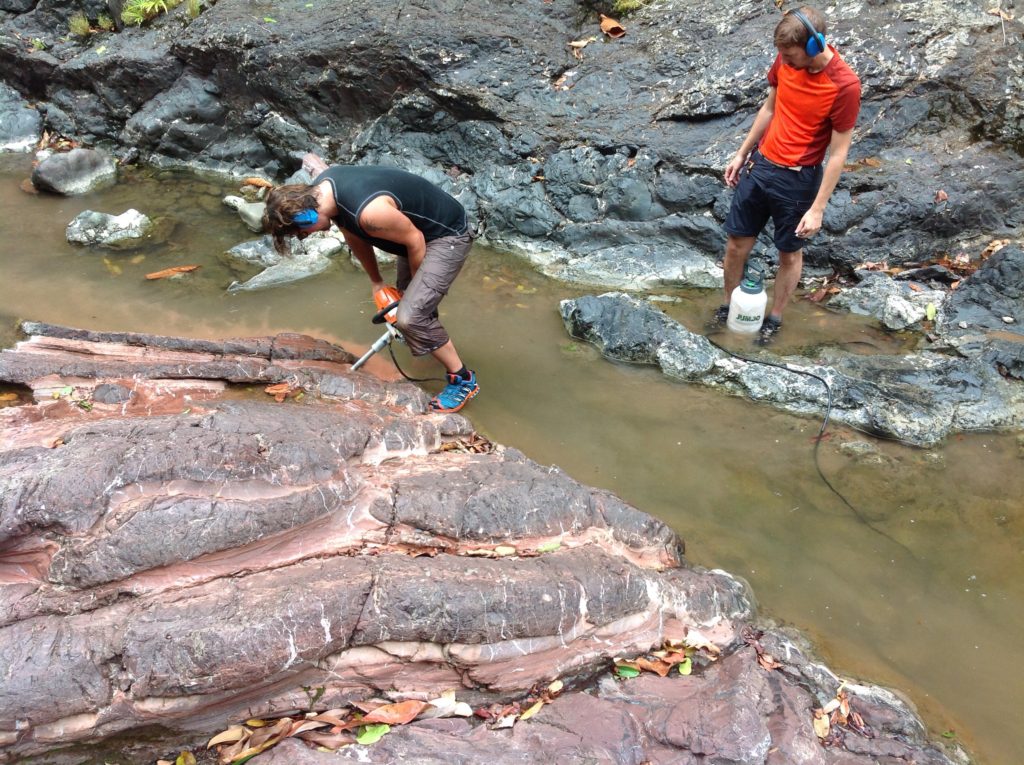
Douwe drilling and Eldert pumping to sample red clays on the contact between pillow basalts and radiolarian cherts 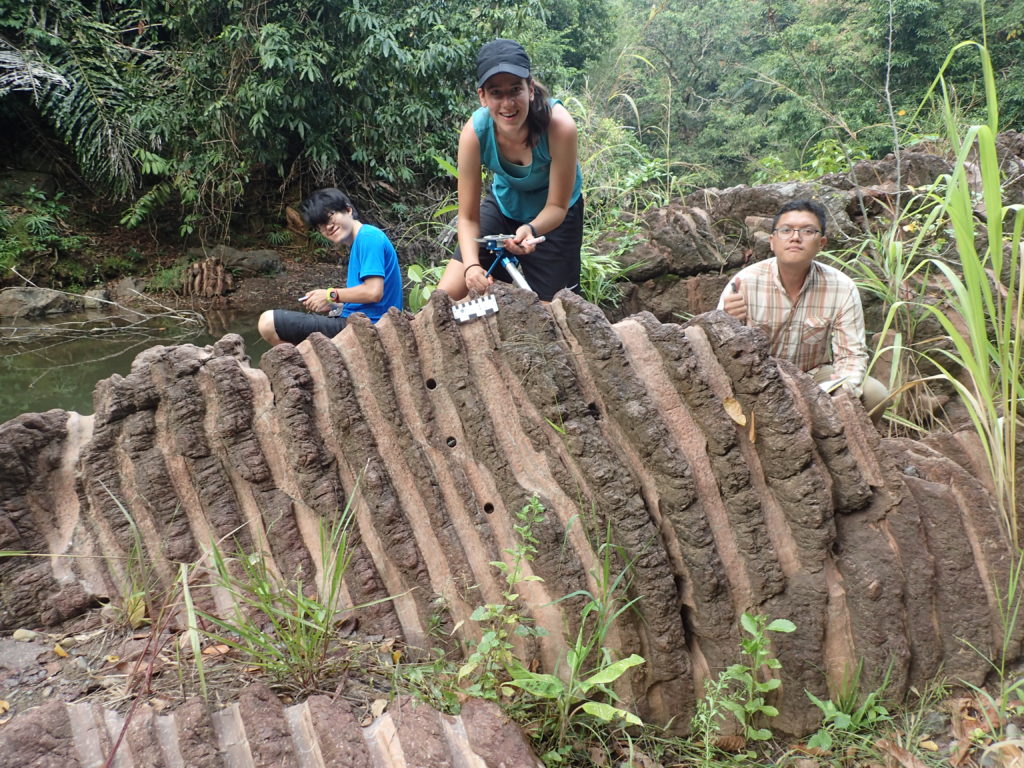
The rest of the team (Licheng, Suzanna, Junaidi) orienting and wrapping the cores sampled at a section of rhythmically alternating radiolarian chert and red clay.
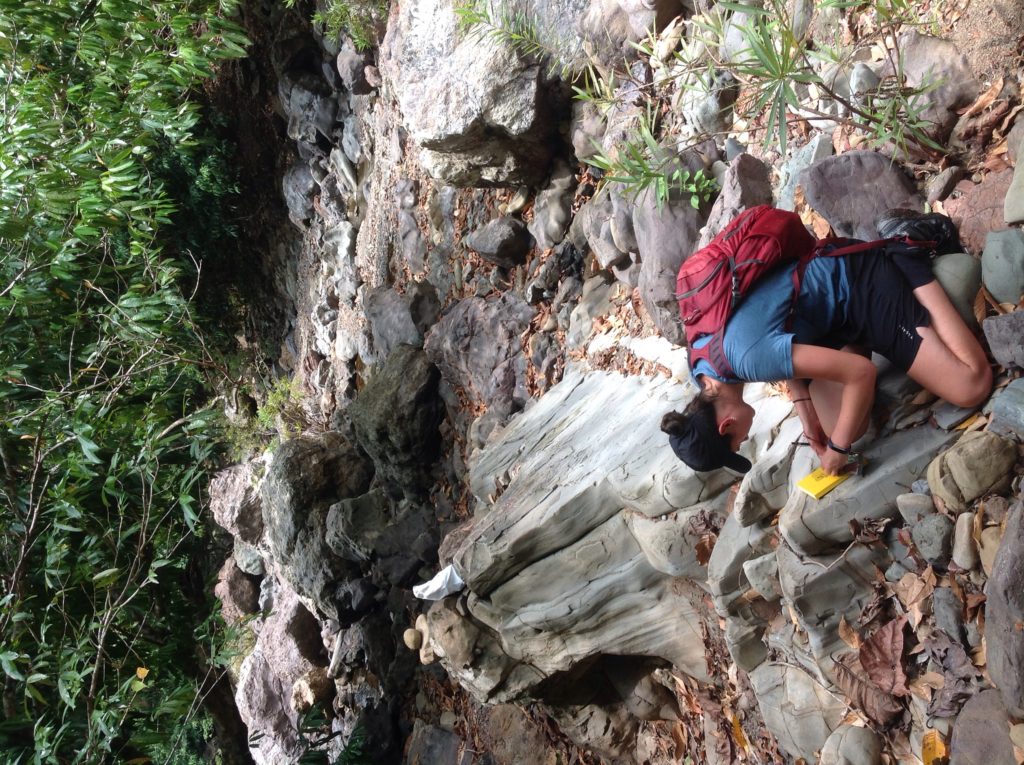
Sampling and taking measurements of the flysch, the topmost part of an OPS. 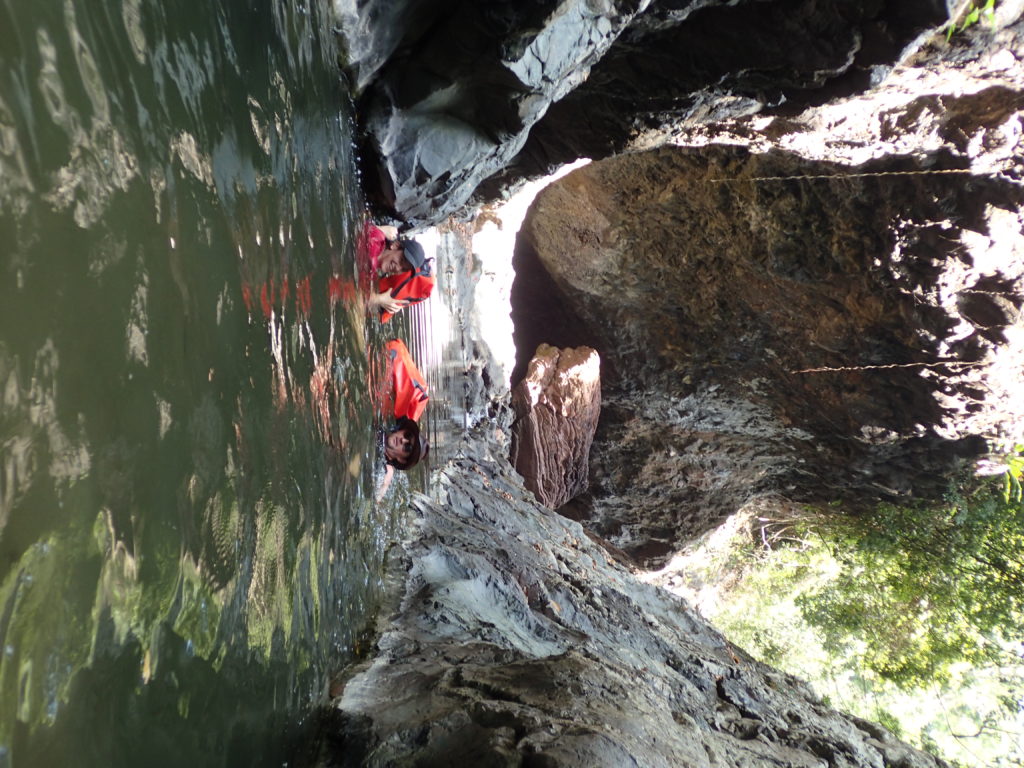
Gotta do something for your rocks... 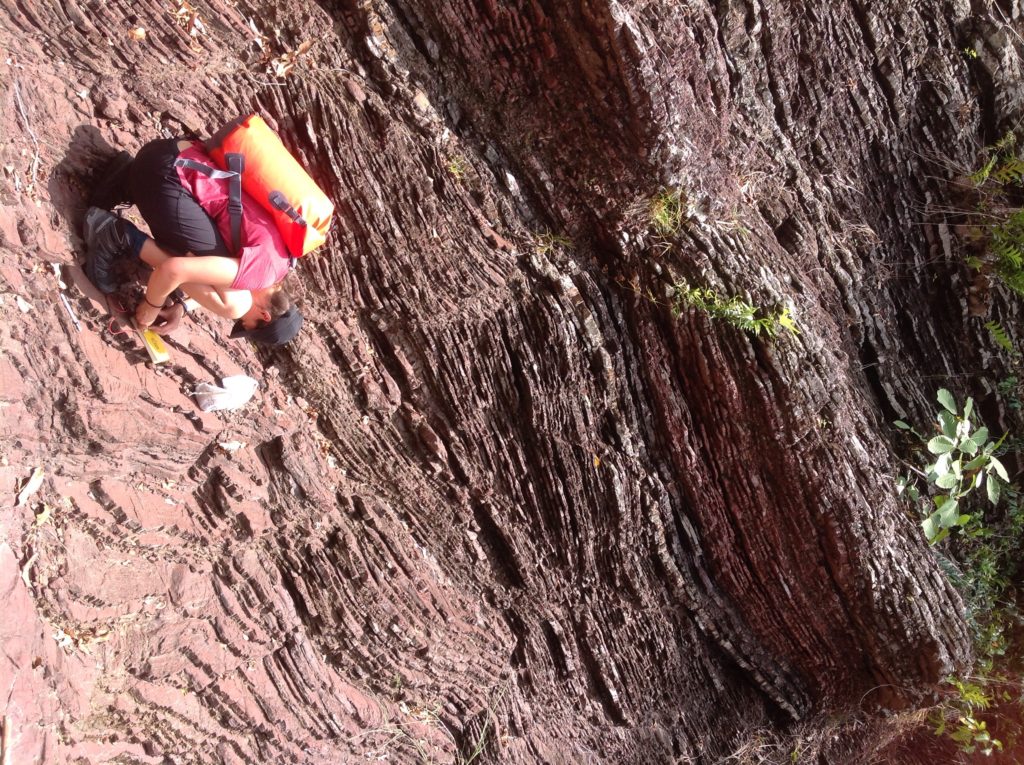
But it is definitely worth it! Sampling in a spectacular chert section.
After a good week of sampling in this beautiful river, we went on to find some exposures of ophiolite rocks, located in the Darvel Bay area, eastern Sabah. Unfortunately, these rocks (the pillow basalts in particular) have been subject to a bit – quite a bit – of weathering, which made them impossible to sample for paleomagnetism.
Luckily, we did not drive all the way to the east for nothing, as these rocks are located fairly close to Sepilok, one of the world’s most famous locations to spot Orangutans in the wild. We spent a full day playing tourists, visiting the Sun Bear Conservation Center, and the Orangutan Rehabilitation Center, and we finished the day off with a nice cold beer by the pool.
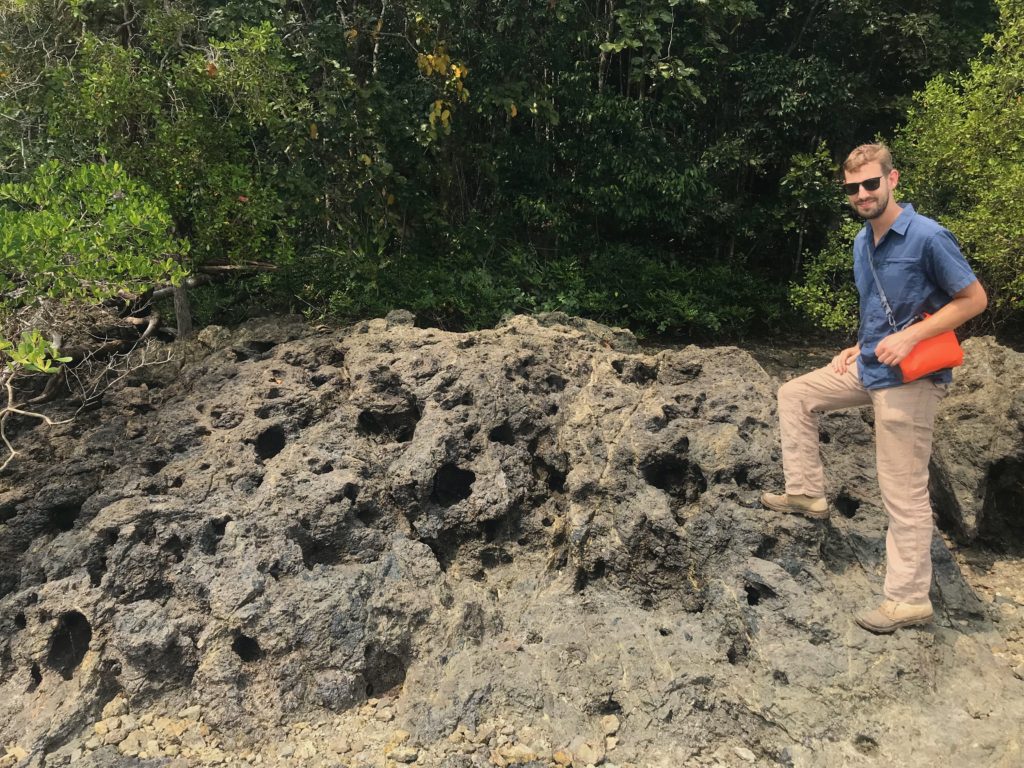
Happy Eldert with some unhappy pillow basalts 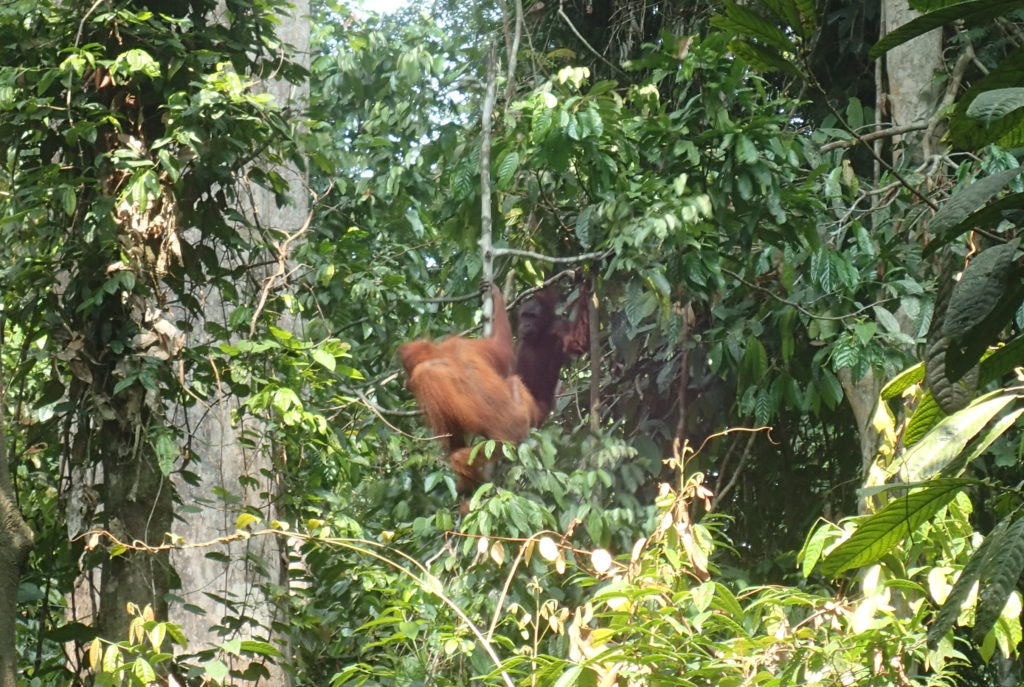
Orangutans in Sepilok
After that we felt like doing more serious work again, so we went to the northern ‘Tip of Borneo’ where we sampled another OPS section in Kudat Peninsula. Here, picture-perfect sandy white beaches alternate with textbook-perfect pillow basalts. I could think of a worse place to spend my days at the office.

Eldert sampling pillow basalts exposed on the west coast of Kudat Peninsula 
Where picture-perfect sandy beaches alternate…
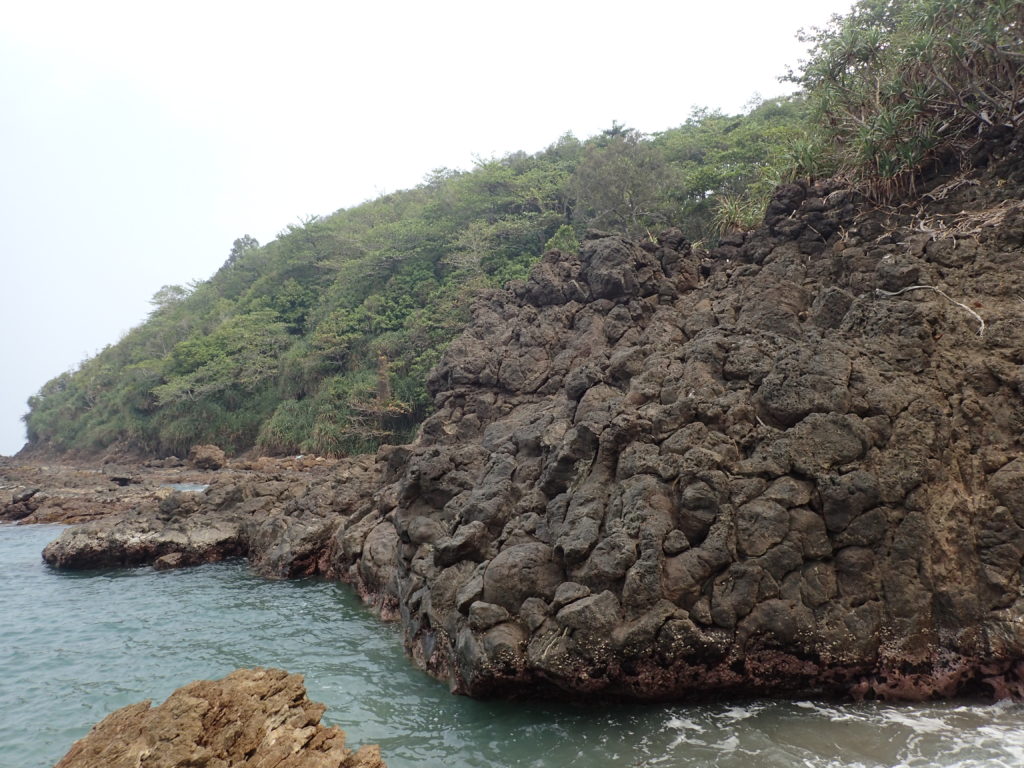
…with textbook-perfect pillow basalts 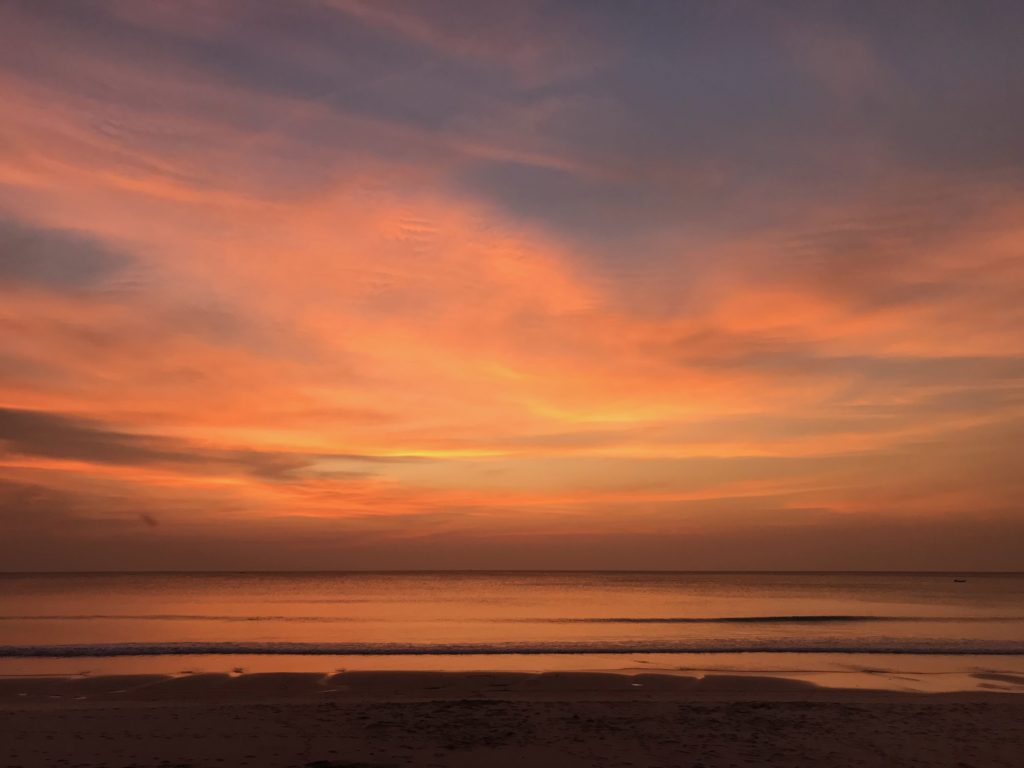
And beautiful sunsets to end our days at the office in Sabah, Malaysian Borneo
![]() This work is licensed under a Creative Commons Attribution-NonCommercial-ShareAlike 4.0 International License.
This work is licensed under a Creative Commons Attribution-NonCommercial-ShareAlike 4.0 International License.
